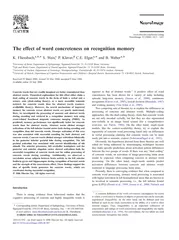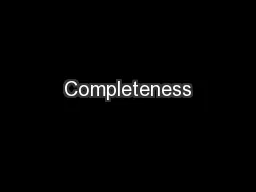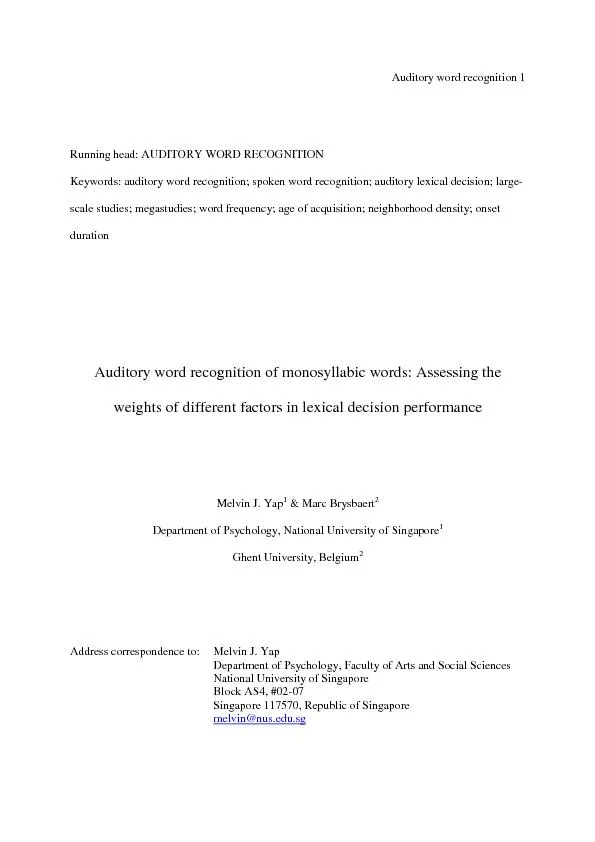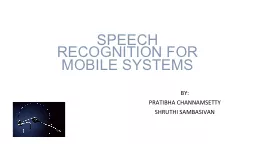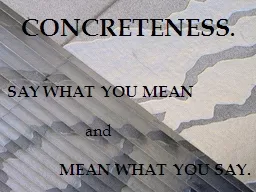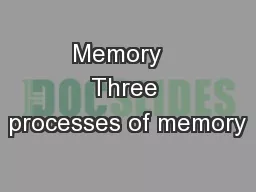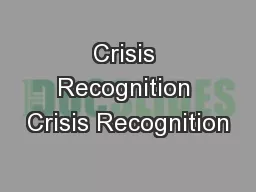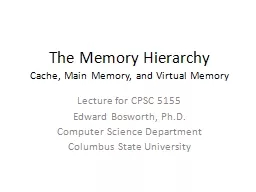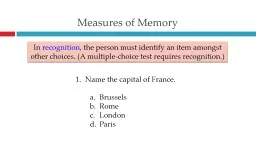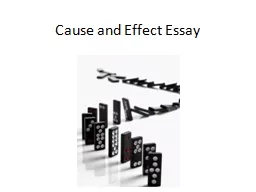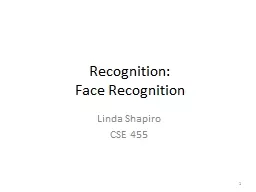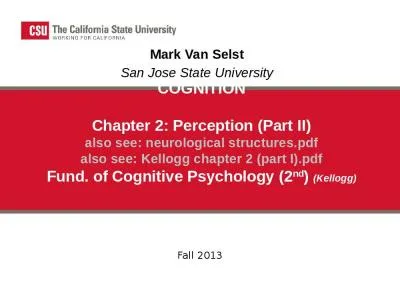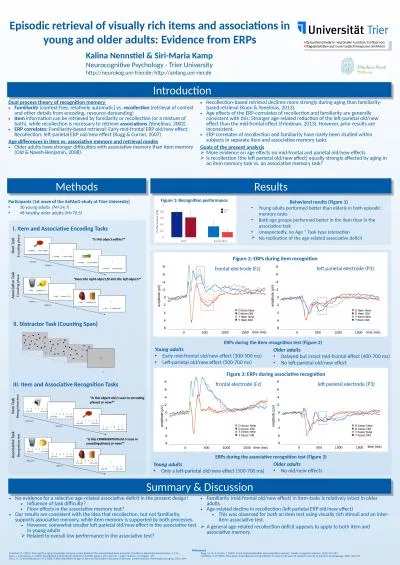PDF-The effect of word concreteness on recognition memory
Author : natalia-silvester | Published Date : 2015-05-19
Fliessbach S Weis P Klaver CE Elger and B Weber University of Bonn Department of Epileptology SigmundFreudStr 25 D53105 Bonn Germany Life and Brain Center Department
Presentation Embed Code
Download Presentation
Download Presentation The PPT/PDF document "The effect of word concreteness on recog..." is the property of its rightful owner. Permission is granted to download and print the materials on this website for personal, non-commercial use only, and to display it on your personal computer provided you do not modify the materials and that you retain all copyright notices contained in the materials. By downloading content from our website, you accept the terms of this agreement.
The effect of word concreteness on recognition memory: Transcript
Download Rules Of Document
"The effect of word concreteness on recognition memory"The content belongs to its owner. You may download and print it for personal use, without modification, and keep all copyright notices. By downloading, you agree to these terms.
Related Documents

